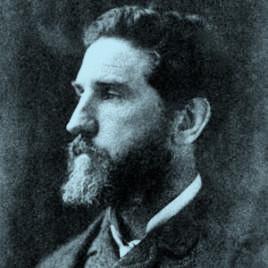Pioneer Information
Born in Dublin, Ireland, Saint-Gaudens moved to New York City with his family as an infant. Completing school at the age of thirteen, he apprenticed with a cameo cutter during the day and took night art classes at the Cooper Union and the National Academy of Design. At the age of nineteen Saint-Gaudens traveled to Paris, where he studied at the École des Beaux-Arts. In 1870 he left Paris for Rome, where he studied classical art and architecture and worked as a professional sculptor for the next five years. Saint-Gaudens returned to America, receiving his first commission in New York City in 1876, the Admiral Farragut Monument (1881) in Madison Square Park. Other public sculptures include the Eli Bates Fountain and Abraham Lincoln statue (1887) in Chicago’s Lincoln Park, the Adams Memorial (1891) in Rock Creek Cemetery, the John A. Logan Monument (1897) in Chicago’s Grant Park, the Memorial to Robert Gould Shaw and the Massachusetts Fifty-Fourth Regiment (1897) along Boston’s Black Heritage Trail, and a statue of General Sherman led by Victory (1903) in Manhattan’s Grand Army Plaza. Diagnosed with cancer in 1900, Saint-Gaudens moved to Cornish, New Hampshire, where he continued to produce reliefs and public sculpture.
Throughout his career Saint-Gaudens worked closely with various architects, including McKim, Mead & White, most of his work being created for specific sites. He sculpted over 200 marble and bronze works and received portrait relief, decorative project, and public monument commissions worldwide. Saint-Gaudens also taught from 1888 to 1897, tutoring young artists privately, teaching at the Art Students League of New York, taking on numerous assistants, and working in support of the American Academy in Rome. He was an artistic advisor to the Columbian Exposition of 1893 and was part of the McMillan Commission, which made recommendations for the U.S. Capitol.








